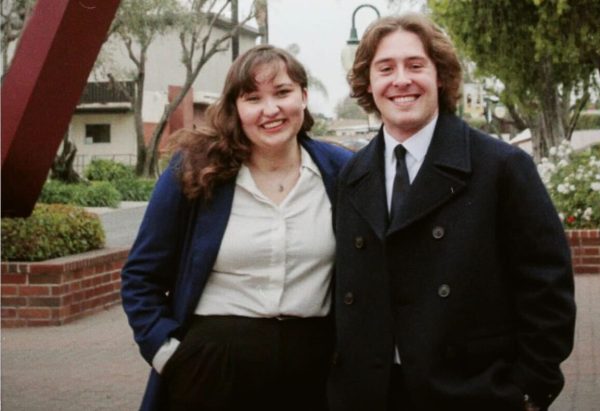Students dig up tusk
Archaeology students uncover a key piece of the mammoth skeleton.

Photo courtesy of Paul Langenwalter
December 1, 2016
The anthropology department uncovered the tip of the left-side tusk of the woolly mammoth in the Hope Hall mammoth site on Nov. 17.
A second tusk
The field methods of Archaeology 1 and 2 classes, as well as a graduate class in the Cook School of Intercultural Studies, have searched for the second tusk since the discovery of the right tusk in 2006. The classes have also found other pieces of the skull and thousands of animal specimens, but they have not found the remaining left-side of the skull.
“So this is adding more to that particular part of the story in terms of finding the other tusk because we have been wondering where it was for years,” said Paul Langenwalter, anthropology department chair and professor.
The discovery of the second tusk also amazed many of the anthropology students, including senior anthropology major Amber Blevins, who worked on the site when the tusk became identified.
“It was an amazing feeling just because I’ve been wanting to do archaeology and paleontology since I was four. So for something like that to actually happen and see it for the first time coming out of the ground after thousands of years was like, woah,” Blevins said.
Help from construction
During the construction of the Alton and Lydia Lim Center for Science, Technology and Health, constructors realized the original stream bed of the mammoth was larger than Langenwalter had speculated. While this did not cause great concern with the construction, it made digging out the mammoth tusk easier.
“We have a lot of different kinds of sediments in the site,” said Aimee Montenegro, senior anthropology major. “So when we were digging in that certain unit, we hit a sandier deposit and that’s how we were able to find the second tusk more easier because we were able to dig through that area in a more easier way.”
Langenwalter speculates the mammoth washed downstream in ancient stream bed, which disjointed and strayed the pieces from each other. Natural causes have also caused erosion and damage to the tusk and other mammoth bone pieces.
“We know that after it was deposited where it was it sat there partially exposed for a long period of time and water flowed onto it because the top of the skull… was degraded by exposure to the sun and it fell apart, and we’ve been finding parts of it for years,” Langenwalter said.
The hunt for more
As a result of these factors, it will take time to fully dig out the pieces carefully. But, Langenwalter is excited to have found more of the remaining pieces of mammoth.
“This kind of gives us closure as to what happened to the other side of the skull and some of it is still embedded… in unexcavated parts of the site,” Langenwalter said.
Within the classes, students have the opportunity to gain real experience in the archaeology field on their own campus, rather than traveling several hours, Langenwalter said. Students work in completing several different tasks on the site, including digging, cleaning and screening.
“Already I’ve learned a lot [including] learning different ways of seeing the world and different ways of seeing different cultures and different places,” Blevins said.






